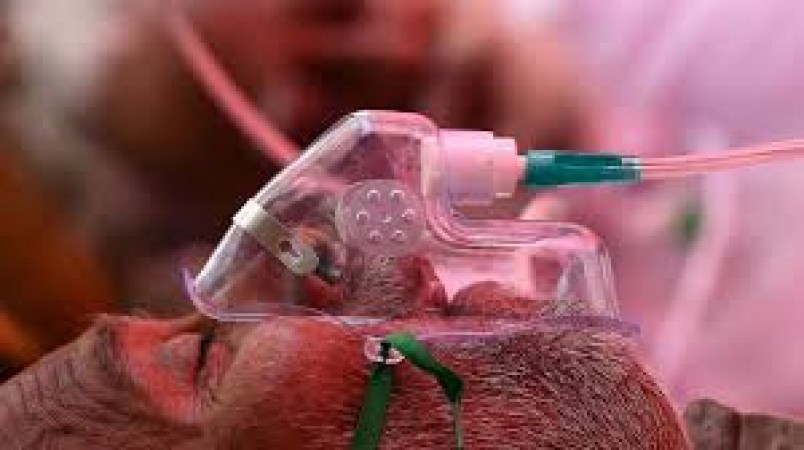
COVID-19, caused by the SARS-CoV-2 virus, is notorious for its ability to wreak havoc on the human body. One of the most significant impacts it has is on the immune system. When the virus enters the body, it triggers a cascade of immune responses aimed at neutralizing the invader. However, in severe cases, this immune response can spiral out of control, leading to a phenomenon known as a cytokine storm. This hyperactive immune response not only damages healthy tissues but also leaves the body vulnerable to opportunistic infections.
Opportunistic Infections
Mucormycosis, commonly referred to as black fungus, is one such opportunistic infection that has garnered attention in the wake of the COVID-19 pandemic. Mucormycosis is caused by a group of fungi belonging to the order Mucorales, which are ubiquitous in the environment. Under normal circumstances, these fungi do not pose a threat to healthy individuals. However, in the context of a weakened immune system, they can cause severe and potentially life-threatening infections.
Impact on Immune System:
COVID-19 is known to weaken the immune system through various mechanisms. The virus primarily targets the respiratory system, infecting cells lining the airways and lungs. This can lead to inflammation and damage to the respiratory epithelium, impairing the body's ability to mount an effective immune response. Additionally, COVID-19 can dysregulate the immune system, leading to a state of immune exhaustion or dysfunction. This weakened immune state provides an opportunity for opportunistic pathogens like mucormycosis to thrive.
Hyperglycemia and Steroids:
Another factor that contributes to the development of mucormycosis in COVID-19 patients is hyperglycemia. COVID-19 has been associated with glucose metabolism abnormalities, including hyperglycemia, particularly in patients with preexisting diabetes or those who develop steroid-induced diabetes during treatment. Elevated blood sugar levels create an environment conducive to fungal growth, as fungi thrive in high-sugar environments.
Rise in Blood Sugar Levels
COVID-19-induced hyperglycemia can be attributed to several factors. The virus can directly infect pancreatic cells, leading to impaired insulin production and glucose metabolism. Additionally, the inflammatory response triggered by COVID-19 can lead to insulin resistance, further exacerbating hyperglycemia. Moreover, the use of glucocorticoids, such as dexamethasone, in the treatment of severe COVID-19 can also contribute to hyperglycemia by impairing insulin sensitivity and promoting gluconeogenesis.
Steroid Therapy
Steroids are commonly used in the management of severe COVID-19 to mitigate inflammation and prevent cytokine storms. However, prolonged use of steroids can have immunosuppressive effects, compromising the body's ability to fight off infections. Steroids also exacerbate hyperglycemia by increasing insulin resistance and promoting gluconeogenesis in the liver. This combination of immunosuppression and hyperglycemia creates an ideal environment for the growth of opportunistic pathogens like mucormycosis.
Impaired Oxygenation and Mucosal Damage:
COVID-19 pneumonia can lead to severe respiratory compromise, resulting in reduced oxygenation of tissues throughout the body. Hypoxia, or low oxygen levels, not only impairs immune function but also creates a favorable environment for the growth of anaerobic organisms like mucormycosis. Moreover, the virus can cause extensive damage to the respiratory mucosa, including the nasal passages and sinuses. Mucosal injury provides entry points for mucormycosis spores, facilitating their invasion and colonization.
Reduced Oxygen Levels
Hypoxia is known to impair immune function in multiple ways. It reduces the production of reactive oxygen species (ROS) by immune cells, impairing their ability to kill pathogens. Hypoxia also upregulates the expression of immunosuppressive molecules like vascular endothelial growth factor (VEGF), which promotes the recruitment of regulatory T cells and myeloid-derived suppressor cells. Furthermore, hypoxia can induce metabolic reprogramming in immune cells, shifting their metabolism towards glycolysis and impairing their antimicrobial functions.
Mucosal Damage
The respiratory mucosa serves as the primary barrier against inhaled pathogens, providing a physical and immunological defense against infection. However, COVID-19 can cause extensive damage to the respiratory mucosa, compromising its integrity and function. The virus infects and replicates within epithelial cells lining the respiratory tract, leading to cell death and shedding. This mucosal damage exposes underlying tissues to the external environment, creating entry points for opportunistic pathogens like mucormycosis.
Role of Medical Interventions:
In addition to the direct effects of COVID-19 on the body, certain medical interventions used in the management of the disease can also contribute to the development of mucormycosis. These include invasive procedures such as intubation and mechanical ventilation, as well as the use of immunosuppressive medications like corticosteroids.
Invasive Procedures
Critically ill COVID-19 patients often require invasive procedures such as endotracheal intubation and mechanical ventilation to support respiratory function. These procedures carry a risk of mucosal injury and disruption of normal microbial flora, creating opportunities for opportunistic pathogens like mucormycosis to colonize and invade the respiratory tract.
Contaminated Medical Supplies
Furthermore, inadequate infection control measures in healthcare settings can lead to the transmission of mucormycosis among vulnerable patients. Contaminated medical equipment, such as ventilator tubing and humidifiers, can serve as reservoirs for fungal spores, which can then be disseminated to patients during medical procedures. Similarly, contaminated surfaces and healthcare workers' hands can act as vectors for the transmission of fungal spores between patients. In conclusion, the onset of black fungus post-COVID-19 is a multifactorial phenomenon involving immune suppression, hyperglycemia, mucosal damage, and medical interventions. Understanding these underlying mechanisms is crucial for early detection, prevention, and effective management of this serious complication. By addressing the risk factors associated with mucormycosis and implementing appropriate infection control measures, healthcare providers can mitigate the impact of this emerging threat on COVID-19 patients.
3 amazing technologies that made car parking easier
Everest will be launched, not Ford Endeavour, will Fortuner's glory end?
Electric version of this popular SUV is coming, will run 500km on full charge!